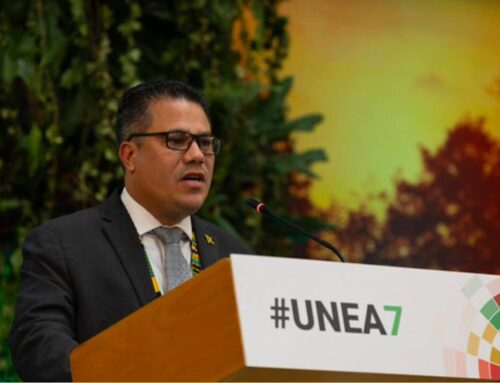How climate change could influence future ice storms in northern Michigan
April 1, 2025
As climate change warms the Great Lakes region, one scientist thinks Michigan could be at a higher risk for more freezing rain events like the one experienced this past weekend.
“We see evidence that suggests that the Great Lakes region as a whole is in the middle of pretty fast warming,” said Richard Rood, a professor emeritus of climate and space sciences and engineering at the University of Michigan.
Rood currently has a paper in the peer-review process that analyzes freezing rain data in the Great Lakes over the past several decades.
“What we would call the average location of the freezing line is moving further and further north, which means that in places where it used to snow quite reliably, we’re now more likely to see freezing rain,” Rood said.
And in places further south, freezing rain is more often giving way to regular rain. On top of that, Rood said freezing rain is changing.
“It’s becoming very erratic,” he said. “You’re likely to see a very large freezing rain event, because there’s just more water available.”
Marty Baxter, a professor of meteorology with Central Michigan University, said the link between ice storms and climate change isn’t totally clear yet.
“In [the] future climate, you’ll have more available water vapor that could lead to more rain,” Baxter said. “But the real issue is, will you see ground temperatures cold enough to make freezing rain?”
Rood said northern Michigan’s recent ice storm checks all the boxes for a weather event that could’ve been influenced by climate change, but it’s too soon to tell.
While freezing rain events of this severity will remain rare, Rood thinks there’s a higher risk for severe ice storms in Michigan during the next 15 to 20 years as the average location of the freezing line moves further north.
Then as Michigan continues to warm several decades from now, that risk will decrease.
“But it looks to me like we are in the middle of this transition zone right now,” he said. “In the northern part of the Lower Peninsula and the Upper Peninsula, and northern Wisconsin … in Ontario … the emergency preparedness people should have it in their planning, and education, and outreach scenario.”
He said considering burying power lines when possible could help mitigate risk, as well as spreading awareness about emergency preparedness protocols for ice storms specifically.
Search
RECENT PRESS RELEASES
Related Post





